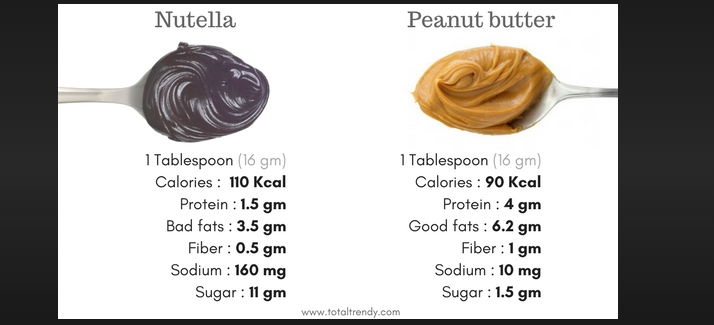Converting Teaspoon of Peanut Butter to Grams: A Handy Guide
When it comes to cooking and baking, accurate measurements are crucial to achieving the desired results. One common ingredient that often requires conversion between different measurement units is peanut butter. Many recipes call for specific quantities of peanut butter, and understanding how to convert measurements, such as a teaspoon of peanut butter to grams, can help you create delicious dishes with precision. In this article, we'll explore the process of converting a teaspoon of peanut butter to grams and provide you with a convenient guide for your culinary adventures.

2 Tablespoon of peanut butter
1. The Challenge of Converting Measurements
Cooking and baking involve a mix of measurement units, and converting between them can be a bit challenging, especially when dealing with different ingredient densities.
Peanut butter, for instance, is a spreadable ingredient with a varying consistency that can affect its weight in grams. However, with a few simple calculations, you can convert measurements accurately and consistently.
2. Converting Teaspoon to Grams
To convert a teaspoon of peanut butter to grams, you'll need to consider both the volume and the density of the ingredient. Peanut butter is denser than water, which means that a teaspoon of peanut butter weighs more than a teaspoon of water.
On average, a level teaspoon of peanut butter weighs approximately 4 to 5 grams. However, keep in mind that this weight can vary based on factors such as the brand of peanut butter and its specific composition.
Creamy peanut butter might have a slightly different density compared to chunky peanut butter.
3. Steps to Convert Teaspoon to Grams
Here's a step-by-step guide to converting a teaspoon of peanut butter to grams:
-
Determine the Density: As mentioned earlier, the density of peanut butter can vary. If you have the nutritional information for the peanut butter you're using, you can find the grams per teaspoon measurement. If not, you can use the average weight of 4 to 5 grams per teaspoon.
-
-
Use a Kitchen Scale: The most accurate way to measure ingredients is by using a kitchen scale. Place a clean, dry spoon on the scale and zero it out. Then, scoop a level teaspoon of peanut butter onto the spoon. The scale will display the weight in grams.
-
-
Online Conversion Tools: If you don't have a kitchen scale, you can use online conversion tools to estimate the grams based on the density of peanut butter. Simply input the density value and the number of teaspoons, and the tool will provide you with the equivalent weight in grams.
-
4. Precision in Cooking and Baking
Converting measurements accurately is especially important in recipes where precise measurements affect the final outcome.
Whether you're making a savory peanut sauce or adding a peanut butter swirl to your baked goods, having the correct amount of peanut butter can make a significant difference in taste and texture.

Compape Nutella and Peanut butter
While converting a teaspoon of peanut butter to grams might seem like a small detail, it can greatly impact the success of your culinary endeavors. By understanding the density of peanut butter and using accurate measurement tools, you can ensure that your dishes turn out just the way you want them to. Whether you're a seasoned chef or a home cook, mastering the art of conversions is a valuable skill that enhances your cooking and baking experiences. So, the next time you're working with peanut butter, you can confidently convert teaspoons to grams and create mouthwatering dishes that delight your taste buds.